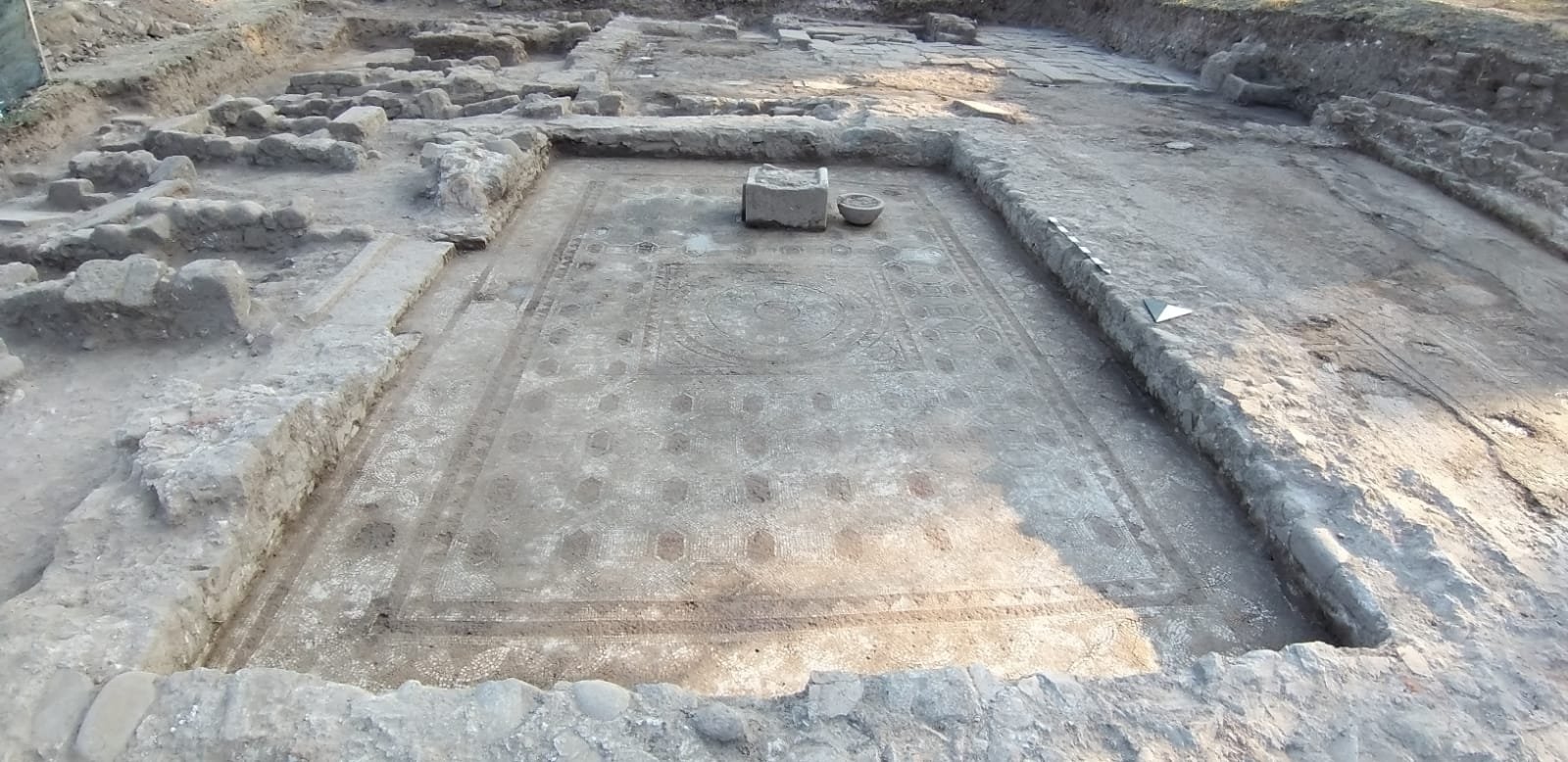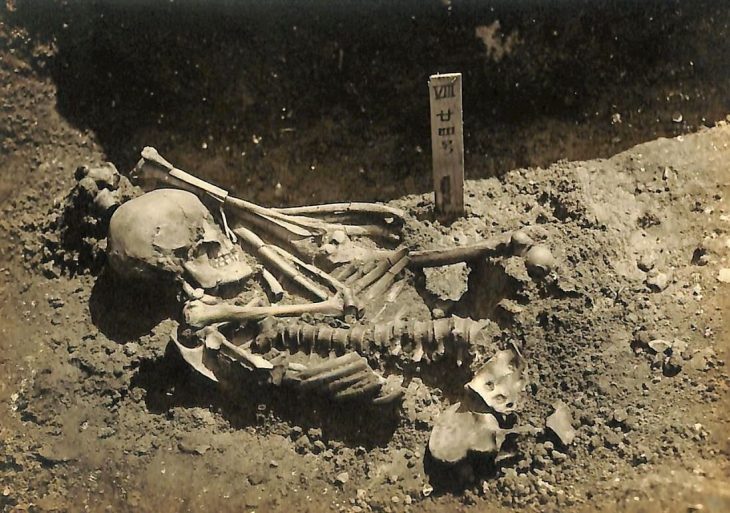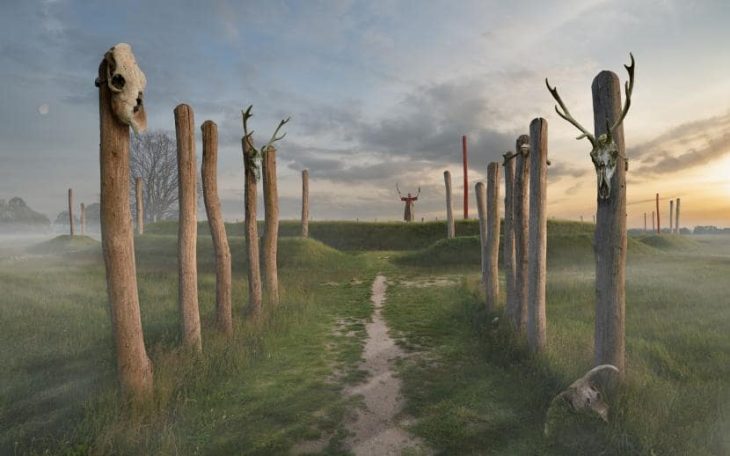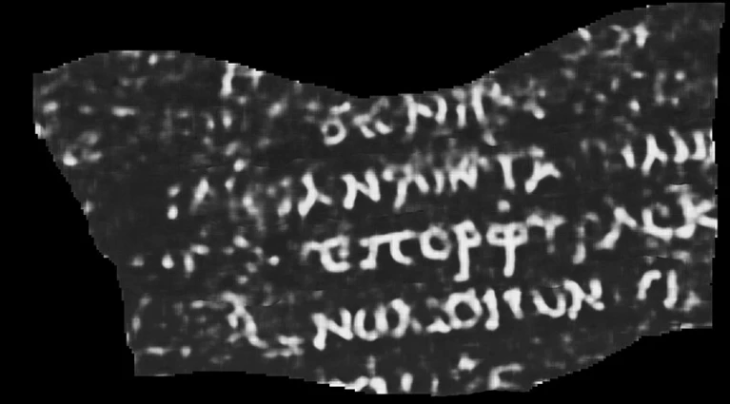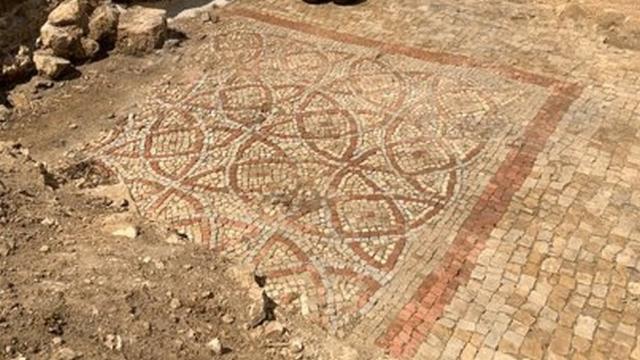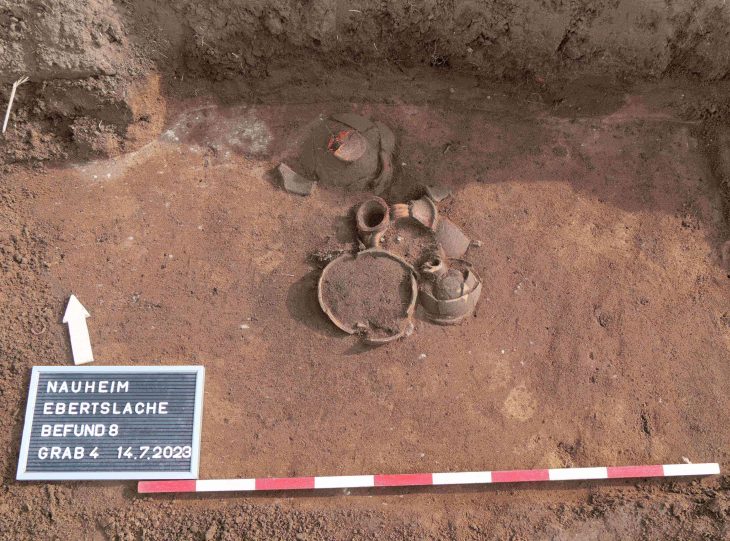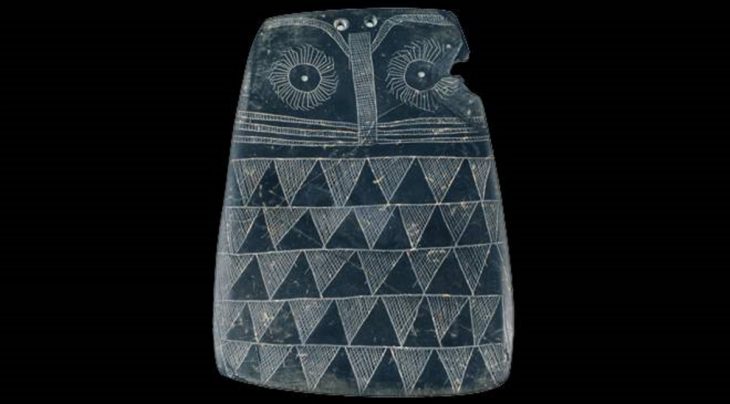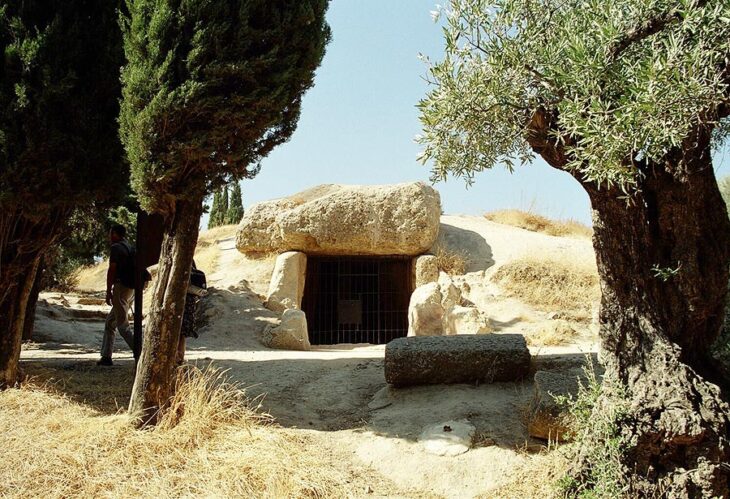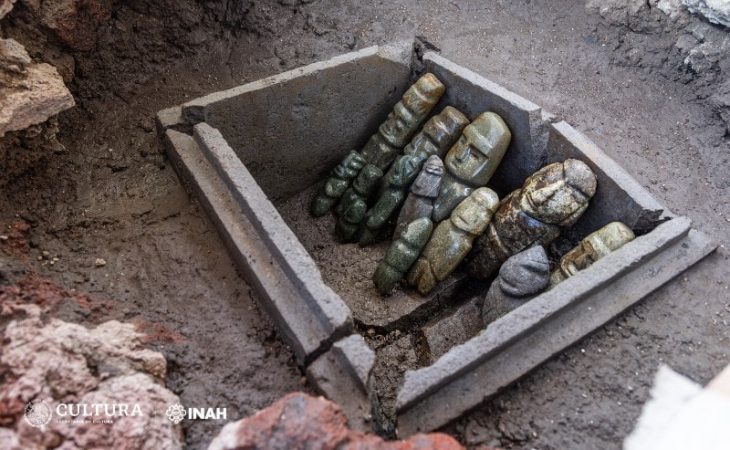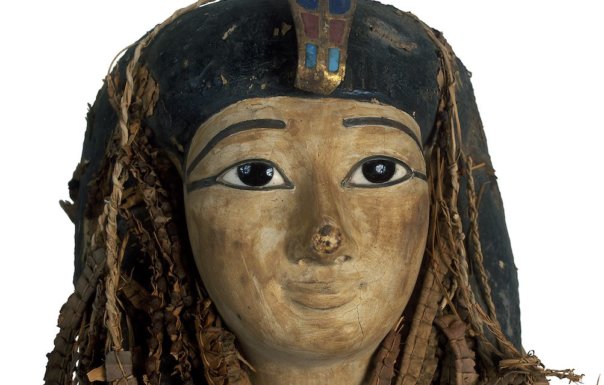During excavations surrounding the Red Basilica at Pergamon, an ancient city in western Turkey that is a UNESCO World Heritage site, a geometric patterned floor mosaic was discovered.
The artifact is estimated to be from the second-third centuries A.D.
Pergamon lies 26 kilometers (16 miles) northwest of the Bergama district in Izmir province and 26 kilometers (16 miles) from the current Aegean Sea shoreline.
While the monumental ruined temple known as the Red Basilica, or Red Courtyard, the Acropolis (settlement, especially a citadel, built upon an area of elevated ground), and the Asclepeion (healing temple) attract local and foreign tourists, the Directorate of Bergama Museum maintains archaeological digs and drilling works in the region.
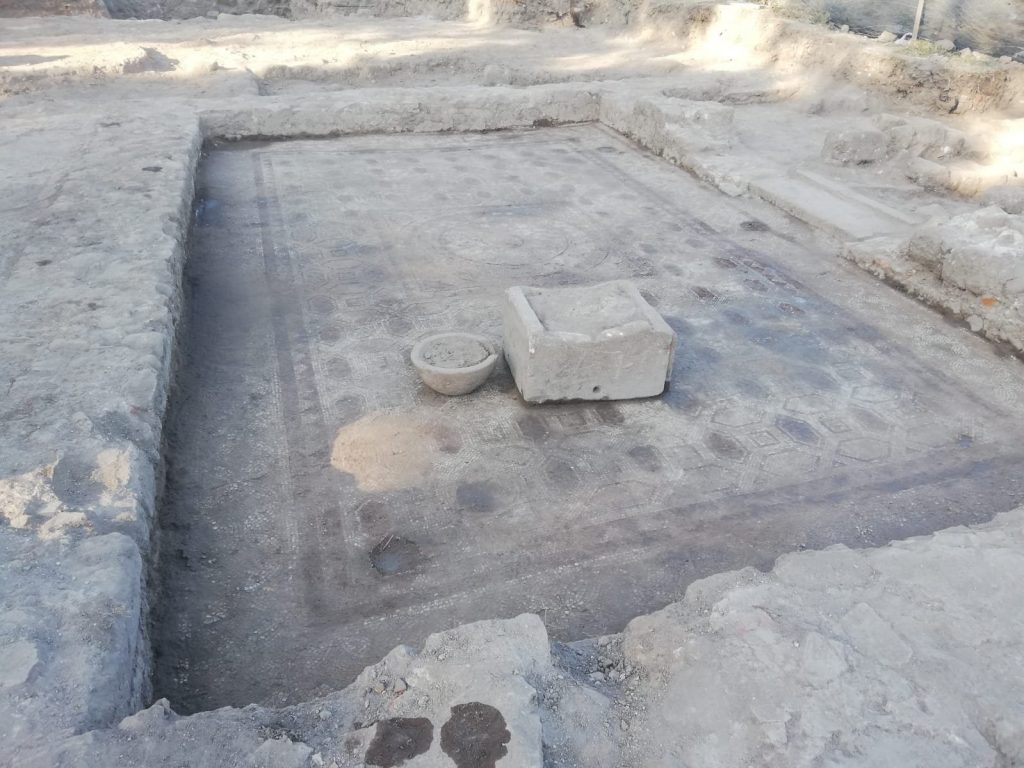
The mosaics on the floor of a building that is thought to belong to a religious area around the Red Basilica were among the recent findings unearthed by the work of the museum directorate. The mosaics are evaluated as “rare artifacts” with their intact and undestroyed structure.
📣 Our WhatsApp channel is now LIVE! Stay up-to-date with the latest news and updates, just click here to follow us on WhatsApp and never miss a thing!!
Bergama Museum director Nilgün Ustura stated that the archaeological studies in the region will progress further and they hope to come across different building remains within the framework of the ancient building complex. Ustura also informed that they will make a scientific publication on the latest finds in the ancient city of Pergamon after the completion of the excavations.
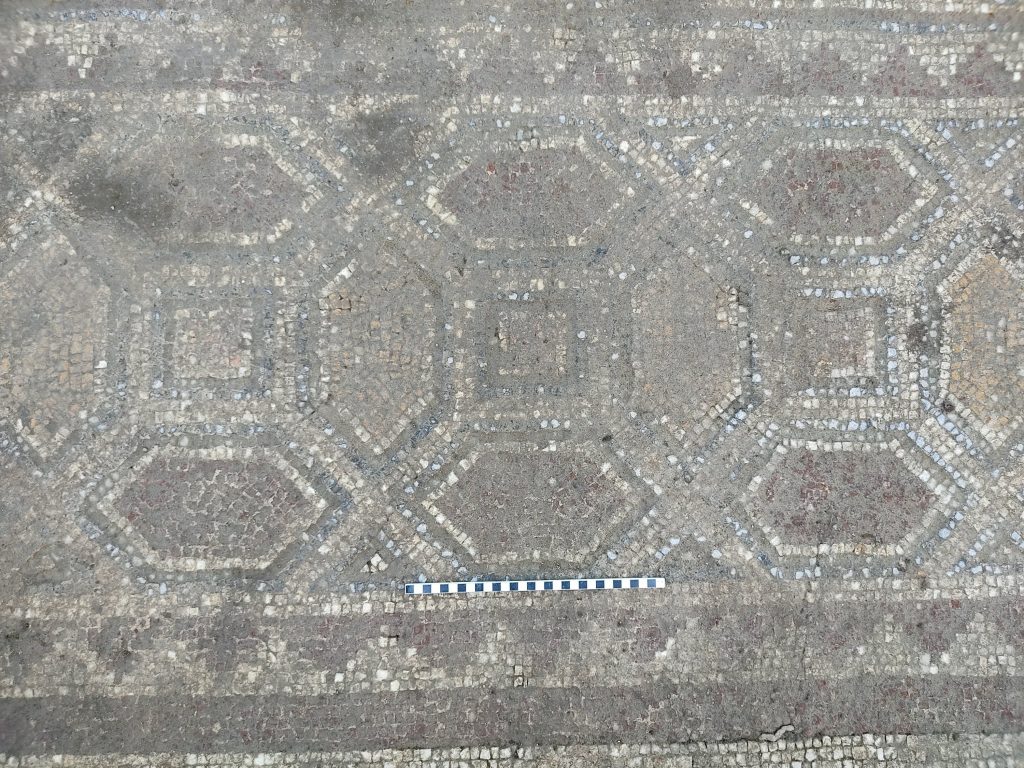
Pergamon was founded in the third century B.C. by the Hellenistic Attalid dynasty and served as the kingdom’s capital for 15 decades. The ancient city, which has been home to various civilizations throughout history and where human voice and breath have never been stopped in its more than 2,500-year existence, has been home to countless civilizations.
The Ancient City of Pergamon is home to many important archaeological structures and wonders. But it also has an important place in the history of medicine, as it was home to one of the most important ancient healing complexes of the region.
Cover Photo: AA

